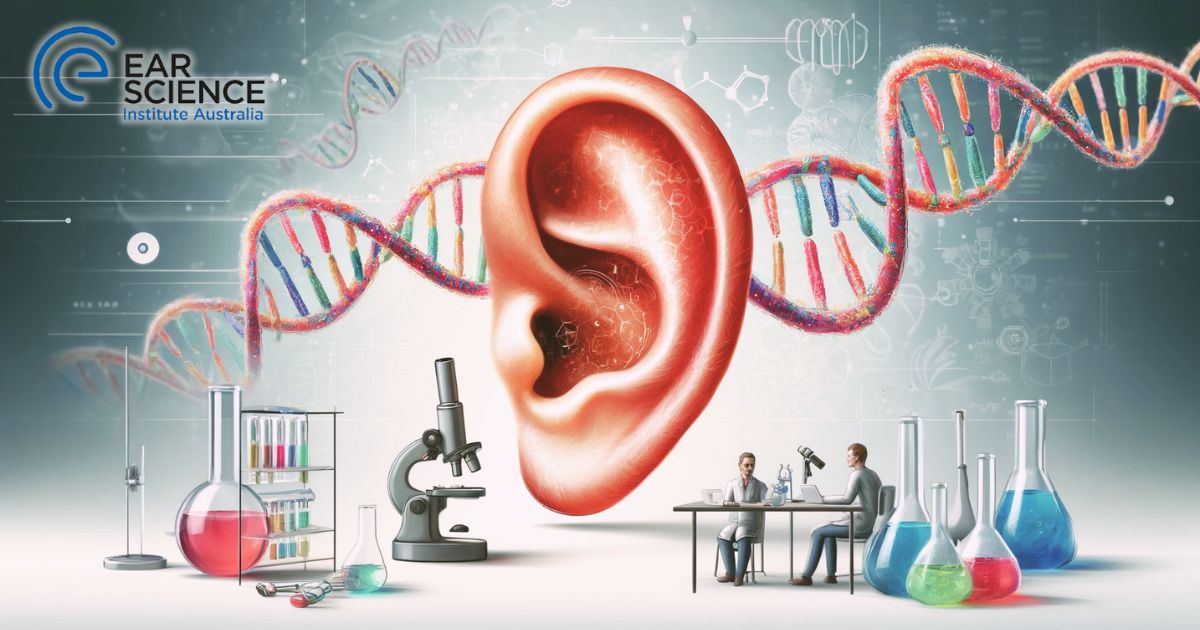Ear Science Institute Australia will develop a WA-headquartered Australasian first biobank to advance genetic therapies for childhood and adult hearing loss.
The Australasian Hearing Registry and Biobank (The Aussie Ear Bank) will be the first of its kind in Australia to store tissue related to genetic-associated hearing loss with the goal of advancing personalized care and new treatments.
A Game-Changing Resource for Hearing Research
This pioneering project will be funded in part by Gift of Hearing donations, a $500,000 Future Health Research & Innovation (FHRI) grant, and a $150,000 grant from the Ian Potter Foundation successfully secured by Ear Science in 2024.
Hearing loss is a major contributor to global disability and currently affects over 1.5 billion people with the number projected to rise to 2.5 billion people globally by 2050. About 13% of adults aged 60 years have a disabling hearing loss, with the rate rising to about 60% for those aged 90 years. However, hearing loss doesn’t just impact the older population. Permanent hearing loss is estimated to affect up to 2 in every 1,000 babies born and increases during childhood to as many as 3 per 1,000 children between the ages of 9 to 16 years old. Genes play an important role in congenital hearing loss, contributing to about 50% of cases of deafness.
According to Ear Science Founder and world-renowned ear, hearing, and skull base surgeon Professor Marcus Atlas, the modern understanding of hearing loss is evolving. “The emerging research around the world and particularly at Ear Science is that genetics is the big new factor in middle age and older people’s hearing loss. This is not what we thought before, and it is a game-changing finding because it is potentially treatable,” Professor Atlas said.
The possibilities of an Australian biobank are astounding. Last year, an 11-year-old boy in Philadelphia with congenital deafness was able to hear for the first time. He was successfully treated by an Italian team led by Alberto Auricchio. Their treatment focused on the OTOF/Otoferlin gene, in which the defective gene was replaced with a functioning one.
“Ear Science is proud to lead Australia with the first hereditary hearing loss biobank for the nation. The bringing together of researchers, hospitals, clinics, and the community is what Ear Science is known for. Thanks to Gift of Hearing donations and the grants from the WA Government’s Future Health Research and Innovation Fund and the Ian Potter Foundation, we can truly tackle the cause and treatment of genetic hearing loss experienced by millions of children and adults worldwide.”
–Sandra Bellekom, Ear Science CEO, Adjunct Associate Professor
Dr. Christo Bester, Head of Implant Innovation, added: “Pioneering gene therapy offers hope for restoring hearing in patients with genetic hearing loss. With 155 genes linked to hearing loss and new discoveries every day, navigating this complex genetic landscape presents a monumental challenge. Our breakthrough therapeutics are only possible through a unique collaboration within our biobank, which connects clinicians and community members with cutting-edge diagnostic tools and genetic analysis to pinpoint viable treatments.”
Newly appointed Ear Science Board Member Mr. David Krasnostein AM said, “To be at the forefront of medical and scientific advancement at this level is truly exhilarating. We are excited about what the future holds for the treatment of genetic hearing loss in Australia.”
The Aussie Ear Bank will allow increased access to genetic samples by linking to national and international registries through a network of clinicians, researchers, institutes, and patients. It will enable Ear Science to build research capacity that will lead to improvements in understanding genetic causes of hearing loss and assist with the development of treatments. Biobank stakeholders will bring together a large repository of genetic samples, audiometric hearing assessment data, electrophysiological, and genetic analyses in an Australian-first digital registry. The establishment of the registry and biobank will enable Ear Science and collaborators to address the many causes of genetic-associated hearing loss and facilitate clinical trial activity in WA, nationally and internationally.
This activity is supported by the Western Australian Future Health Research and Innovation Fund Grant ID FHRIFES2024/2.
The Important Role of Biobanks
A biobank is a facility that stores and manages biological samples donated from individuals for use in research, diagnostics, and treatment. Samples are typically linked to medical records or lifestyle information, to provide researchers with comprehensive datasets for studying diseases, genetics, and other aspects of human health and biology. Biobanks play a crucial role in advancing medical research, personalized medicine, and drug development by giving researchers access to large-scale, well-characterized collections of biological materials.
Australasian Hearing Registry and Biobank (The Aussie Ear Bank) Collaborators:
- Ear Science Institute Australia – Prof M Atlas, Dr Elaine Wong, Dr Christo Bester & Dr David Sly
- Perth Children’s Hospital – Dr Stephen Rodrigues
- Government of WA Dept of Health – Professor Nicholas Pachter and Dr Tina Lamey
- PathWest Laboratory Medicine of WA – Dr Jenny Hui
- Royal Children’s Hospital, Murdoch Children’s Research Institute – Associate Professor Valerie Sung
- University of Sydney – Professor Jose Antonio Lopez Escamez
- Alfred Hospital in Melbourne – Professor Patrick Kwan
- Swinburne University of Technology – Professor Andrew Pipingas
- Lions Eye Institute – Associate Professor Fred Chen and Dr Samuel McLenachan
- University of Melbourne – Dr Benjamin Wei
About ESIA
Ear Science is a world-renowned, for-purpose organisation and centre of excellence that aligns multi-disciplinary teams from research, audiology, and clinical operations to develop innovative treatments for ear and hearing disorders, and eventually find a cure for hearing loss
Source: Ear Science Institute Australia






